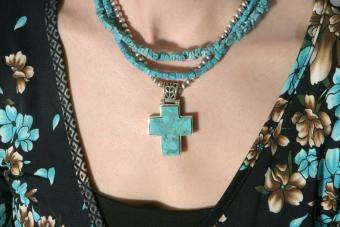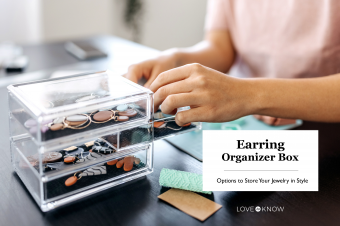
Peridot tuxedo studs add beauty, style and symbolism to formal attire. The vibrant green gemstone, known as the Evening Emerald, stands out from other traditional gemstone or pearl shirt studs. If you are searching for a gemstone tuxedo stud that has romantic symbolism, consider peridot.
About Tuxedo Studs
History of Tuxedo Studs
Shirt studs are small metal fasteners that can be used in place buttons. The studs are often made of metal and may have a pattern, initial or precious gemstone inlay. Shirt studs were first introduced during the nineteenth century when heavily starched stiff shirt fronts became popular in men's fashion. Studs replaced attached buttons because they were difficult to fasten due to the stiff material.
During the nineteenth century, shirt studs were used with most shirts, especially formal attire. The concept of tuxedo studs was introduced to America at the same time as the tuxedo. The American tuxedo is based upon the short British black smoking jacket ensemble created for the Prince of Wales (the future Edward VII) in 1860 by Henry Poole & Company as an alternative to white tie and tailcoat attire for dinner parties. The jacket was distinctive because it did not have tails like formal white tie jackets. A wealthy New York society member, James Potter, obtained one of the dinner jackets during a visit with the Prince of Wales. Potter introduced the dining attire to the other members of exclusive Tuxedo Club in Tuxedo Park. Soon many Tuxedo Club members began wearing the short dinner jacket and the new formal attire became known as a tuxedo. Over the years, Americans began wearing the tuxedo as standard men's formal attire in place of tailcoat jackets. Shirt studs used to fasten tuxedo dress shirts are often called tuxedo studs.
Tuxedo Stud Styles
Tuxedo studs are available in a wide range of styles from traditional mother of pearl oval button to a celtic spiral.
Types of tuxedo studs include:
- Sliding-pin stud--A shirt stud with a moveable metal bar that slides shut
- Screw-back stud--A stud that unscrews to fasten to a shirt and then screws shut
- Plain metal stud--Often made in precious metals such as gold or silver
- Gemstone and metal stud--Gemstones inlayed or mounted on metal buttons
- Monogrammed studs--Metal studs with initials
- Patterns studs--Studs with artistic designs
- Logo studs--A company logo or fraternity symbol
- Theme studs--Theme designs such as a claddagh symbol or the Welsh dragon
Why Peridot Tuxedo Studs?
Peridot tuxedo studs are a good choice for a dressy romantic occasion such as a wedding. Peridot is a symbol of good fortune and peace. The gemstone attracts love and harmonious relationships.
Peridot Lore
Peridot, the gem of the sun, is associated with many legends. Some historians argue that Cleopatra's famous emeralds were really peridot gemstones. Bible scholars claim that peridot was the second stone in Aaron's breastplate. In early times, peridot was credited with the promoting of peace and healing. Ancient Romans believed that peridot set in gold could take away fears, worries and anger. Cups made of peridot were also believed to have healing powers. People wore peridot to improve eyesight, strengthen friendships and to attract and sustain romantic love.
Where to Buy Peridot Shirt Studs
Search for peridot tuxedo studs at local formal menswear stores, jewelry stores and online. Some menswear and jewelry stores that carry tuxedo studs do custom work and can create peridot studs.
Here are some online retailers who sell peridot shirt studs:
How to Use Tuxedo Studs
Since today's dress shirts have buttons, some men are not certain how to attach tuxedo studs. Remember that the stud fastens the shirt in place of the button.
Instructions:
- Prepare the studs for wear. If it is a sling-pin, straighten the pin. Unscrew the screw-back style studs.
- Slide the front of the stud through the button hole below the collar button.
- Fasten the shirt with the bottom of the stud. Do not use the shirt's attached button.
- Secure the end of the stud based upon the stud style. Slide the pin back in place for a sling-pin or screw the fastener shut for a screw-back type.
- Repeat until all of the studs are attached to the shirt.







